Welcome to Part Two of the Co-operative Society blogs!
As discussed in Part One of the blog, in 1927 the Cwmbach Society merged with the previously amalgamated Aberdare and Trecynon societies to create the Aberdare and District Co-operative Society.
This became a common occurrence over time, and by the end of the 1920s, all individual societies in the valley had merged to be part of the Aberdare and District Society. The Society grew through these amalgamations with its neighbours to become the largest society in South Wales and the ‘spiritual centre of co-operation in Wales.’
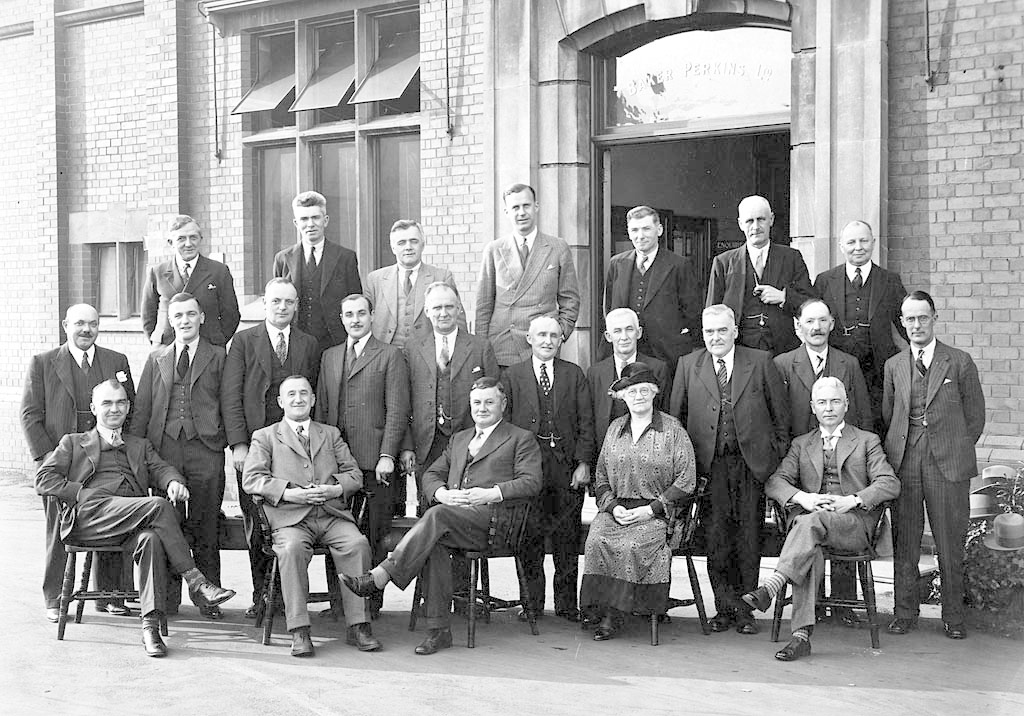
The Aberdare Co-operative Committee, 1930. Image 31/c/066 reproduced by kind permission from Rhondda Cynon Taf Libraries.
Economic success
The Aberdare and District Co-operative soon grew a monopoly over the community’s everyday needs. These societies had substantial enterprises, run by local people for local people, and contributed considerably to the local economy. In 1934 a bakery opened.

ACVMS 2011.22; Image of Co-op Milk carriage delivery milk, with the Co-operative Bakery building in the background.
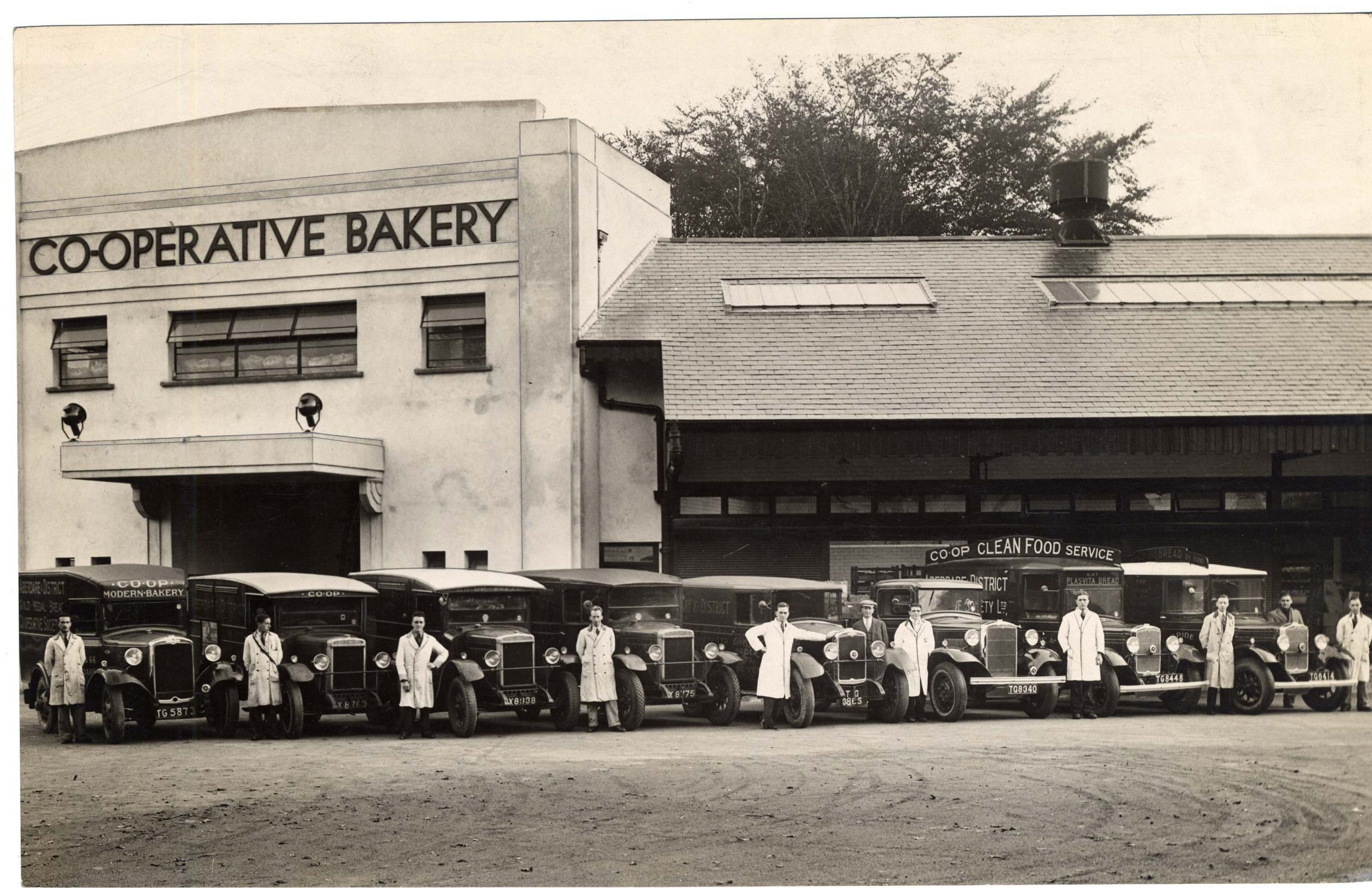
ACVMS 2011.25; Image of Co-op workers and delivery vans in from of the Aberdare Co-operative Bakery.
By the 1950s, everything was provided by the Co-op, from groceries to hairdressing and even funerals. These services only continued to grow, including an abattoir, watch repairing and radio production.
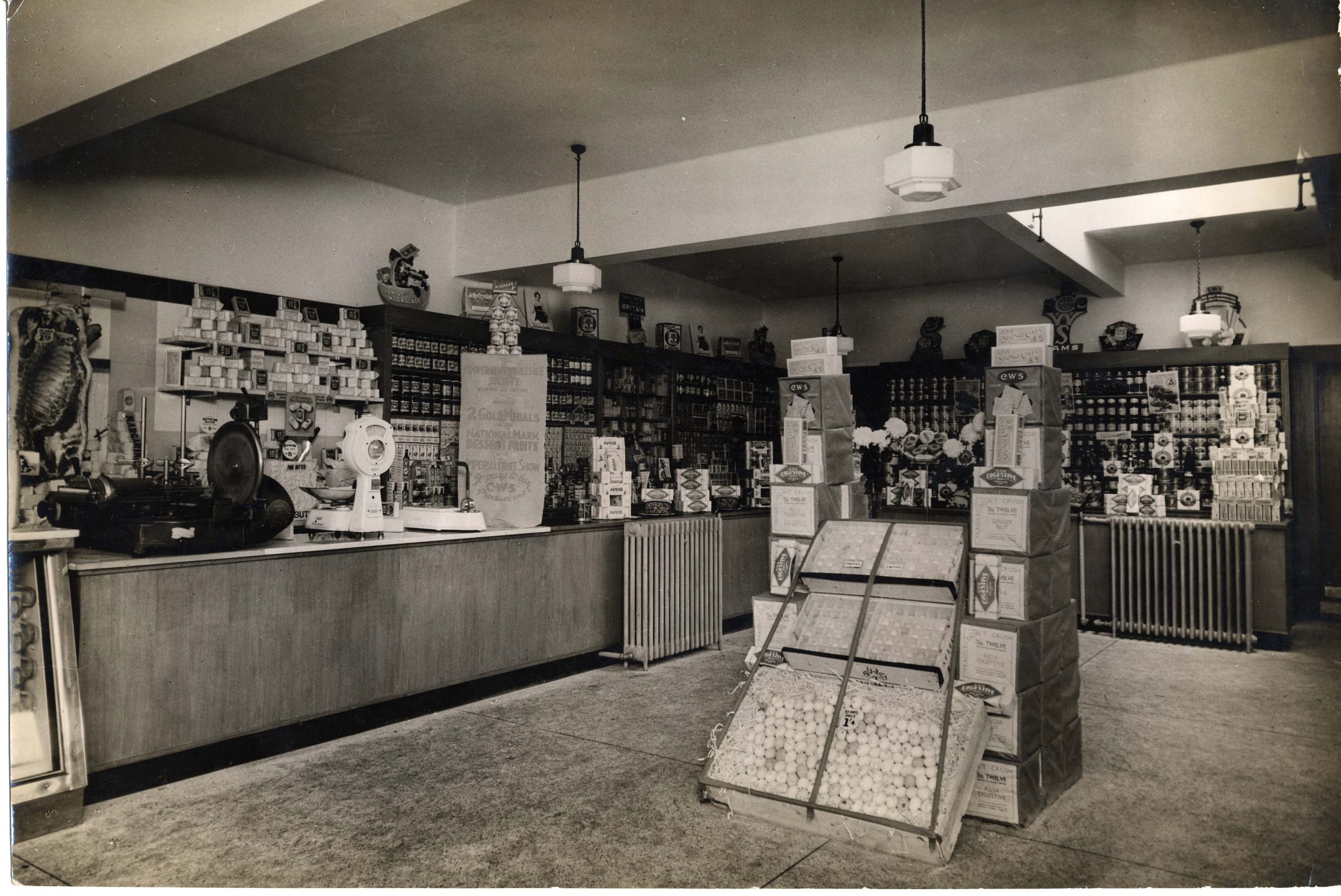
ACVMS 2011.26; Image of inside a co-operative grocery shop.
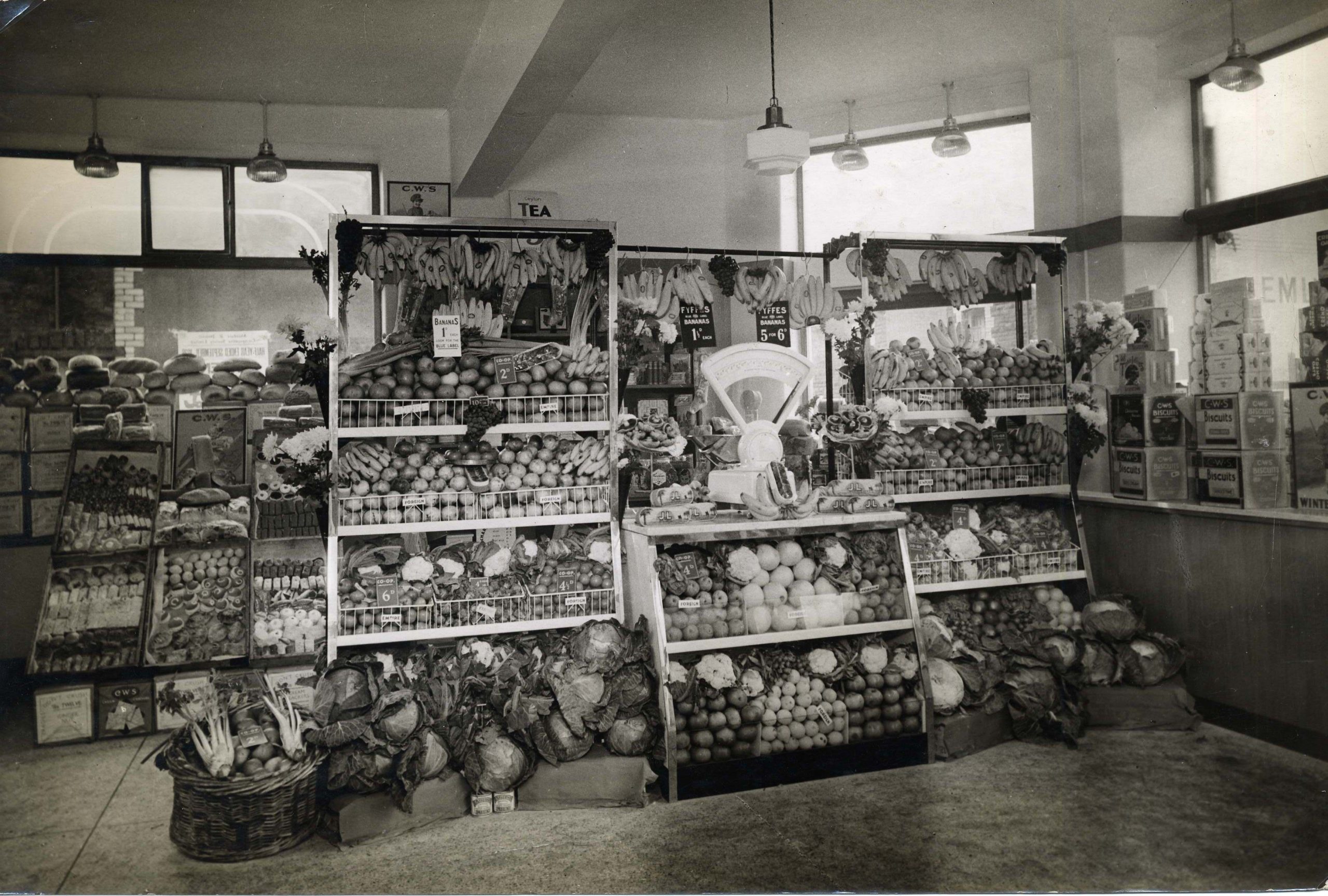
ACVMS 2011.27; Image of fresh fruit and vegetables inside a co-operative grocery shop.
In 1951, it recorded a network of over 20 branches throughout the valleys, bringing over 16,000 members. In 1953, the Aberdare Co-op held 45% of the retail trade for the valley! The successes continued and the society grew, and by 1960 the Aberdare Society had more than 180,000 members. By 1985, the turnover for the businesses exceeded £8 million.

ACVMS 2011.32; Image of a display by The Aberdare and District Co-operative Society, showcasing the products of the Radio and Electrical Department. A sign explains how all items are available on ‘easy payment terms’
The Society seemed to work in everyone’s favour. For example, without banks to keep savings safe, people invested their money into their local co-operative society and this money helped to finance the business.
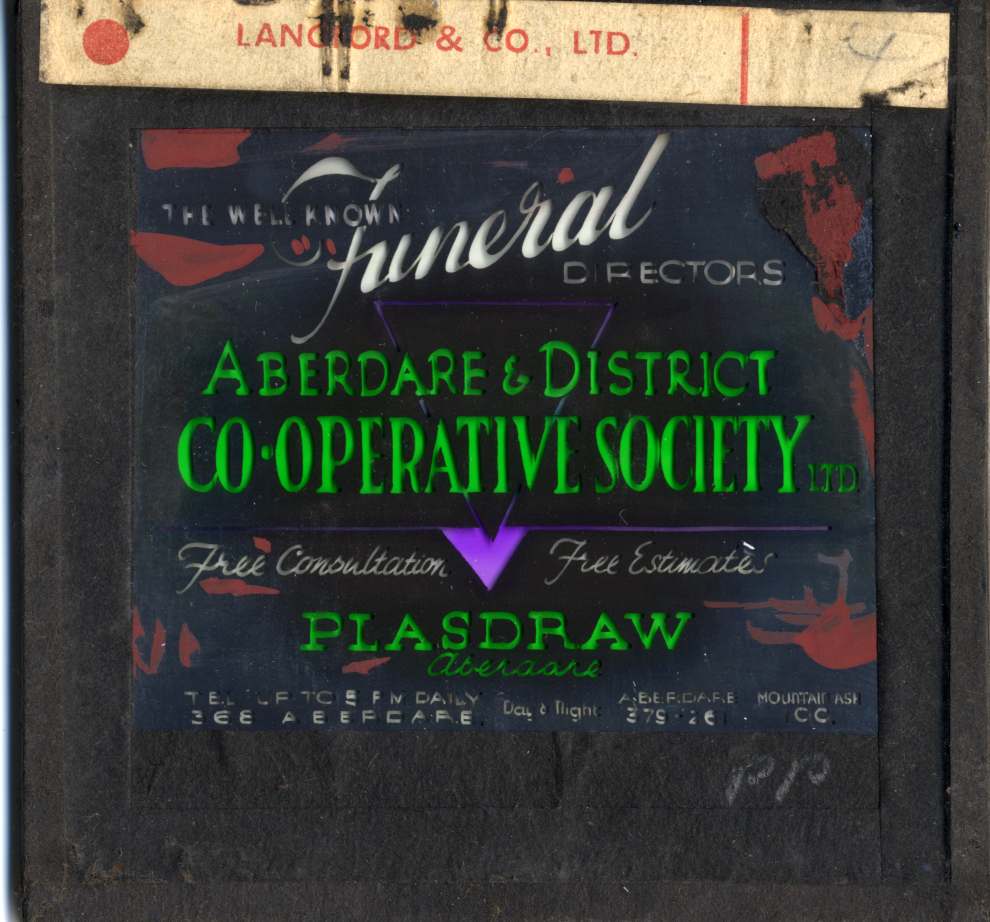
ACVMS 1998.270 (left) and ACVMS 1998.271 (right); Glass slides advertising products and services provided by the Aberdare and District Co-operative Society, including furniture and funeral directors.
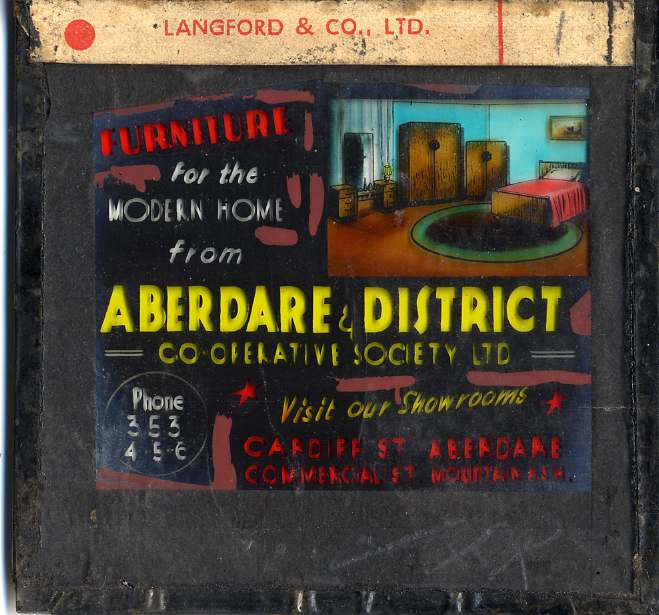
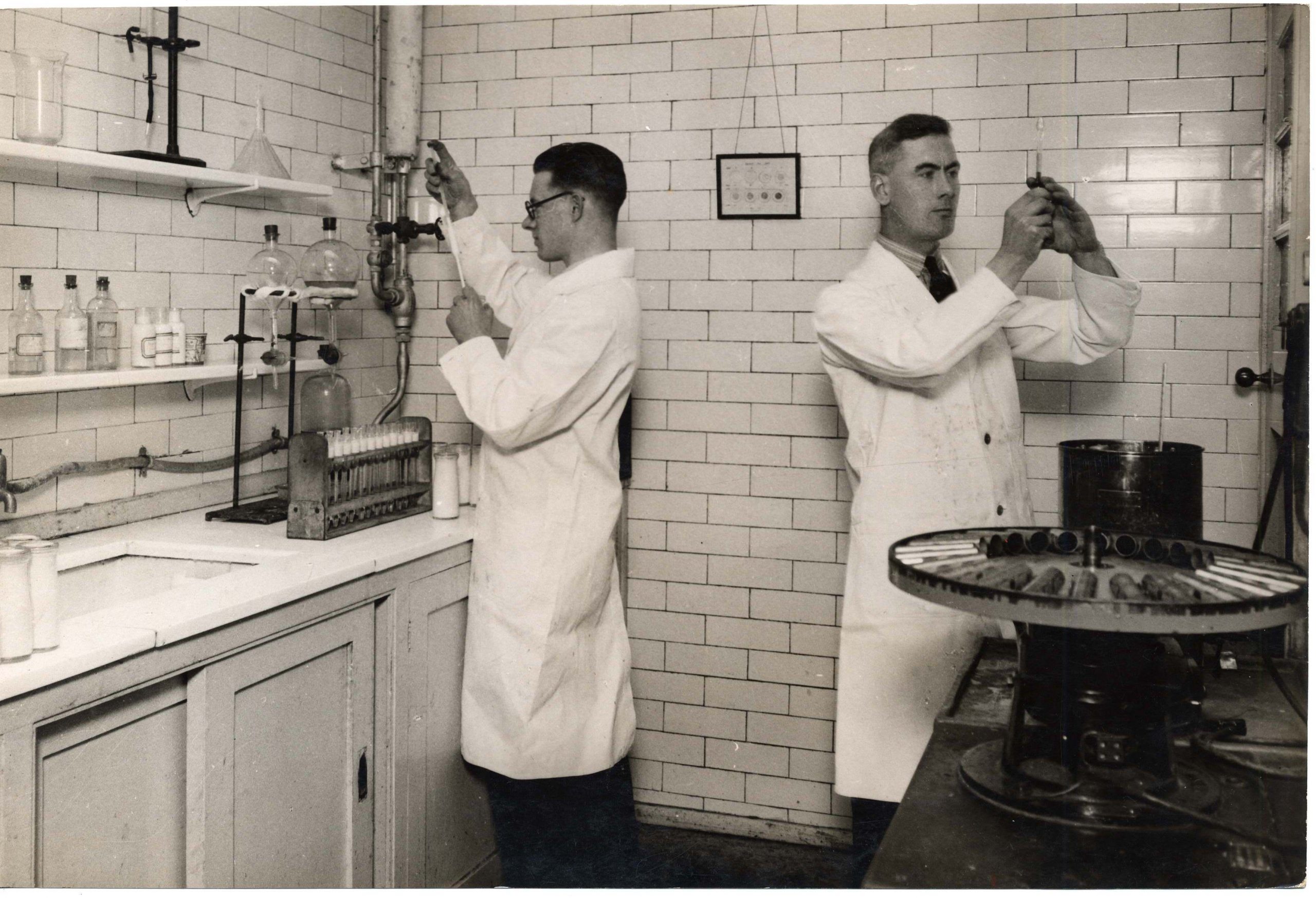

ACVMS 2011.23 (left) and ACVMS 1998.314 (right); Image of co-op workers producing prescriptions and glass slide advertising ‘prescriptions dispersed’ by Aberdare and District Co-operative Society.
Social cohesion
Not only did the Aberdare Co-op provide for the local economy, but it also created a great sense of community and social cohesion.
This was inspired by the Rochdale Pioneers, who encouraged the inclusion of education throughout all co-operative societies. The aim was to spread the message and spirit of co-operation through an educational lens. The Wheatsheaf newsletter, first issued by the Aberdare Workmen’s Industrial Co-operative Society in 1898, provided a regular record of the co-operative’s principles, objectives and merits.
By 1927, the Aberdare Co-op took over the production of The Wheatsheaf. This kept their members informed about products and services, educated on the history of co-operative societies and was also a good use of product advertisement.

ACVMS 2011.62; Copy of The Wheatsheaf newsletter, September 1927.
In an issue produced in September 1927, the newsletter outlines the aims of the co-operative. Some included: ideal and practical movement, raising the standard of life, practicing the art of government and individualistic and social education.
The newsletter also encourages its members to spread the word about the impact of their work. The tagline of the newsletter reads in bold ‘when you have read the ‘Wheatsheaf’, don’t destroy it; pass it on to a friend or neighbour, especially a non-co-operator. Let them see what we are doing.’
Furthermore, the newsletter boasts of the great social impact of co-operative societies explaining:
‘Co-operation had taught the art of self-government and the acceptance of responsibilities. Co-operation made for good citizenship, yet it asked nothing from the state but the freedom to develop.’
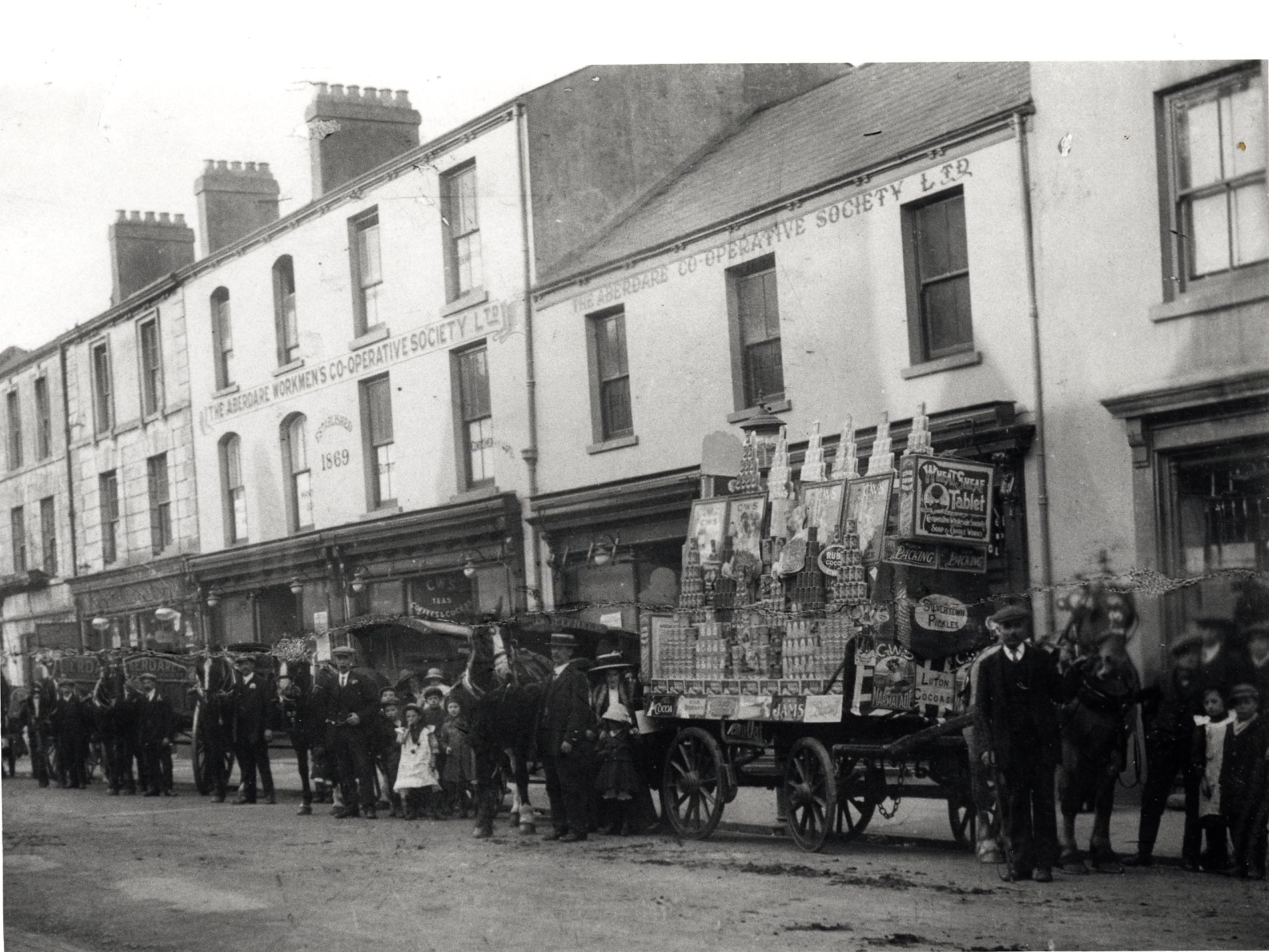
ACVMS 1998.3559; Image of an Aberdare Co-operative Society building. A carriage selling products, and providing copies of The Wheatsheaf, stands outside.
Decline in independent societies
The miners’ strike of 1984/5 caused a change in the co-operatives spending habits. By helping the miners’ cause, the Aberdare society’s surplus began to decline, causing great detriment to their profits. Similarly, from the 1950s there were great changes in society and people’s expectations, partly due to technological developments.
By this time, small, independent societies found it increasingly difficult to compete with bigger market chains. By the 1960s, more people began shopping in out-of-town superstores which caused a decline in local business.
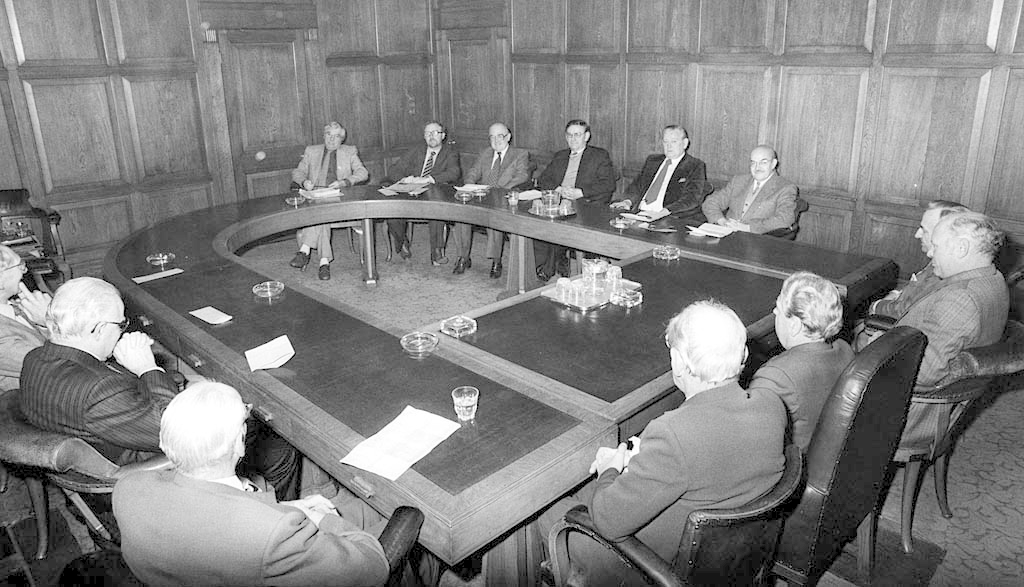
Aberdare and District Co-operative Society Ltd., 1984. Last board meeting to be held at Plasdraw House. Image 31/c/135 reproduced by kind permission from Rhondda Cynon Taf Libraries.
In 1988, the Aberdare and District Society gave up its independent status and became part of the national chain of the Co-operative Retail Services Limited (CRS). The CRS reduced the number of local autonomous societies and concentrated on forming large regional societies. In the same year (1988), the Rhondda Co-operative society joined the CRS.
Whilst this did indicate an end to some independent co-operative retail societies, it was only the beginning for the Co-operative Movement in Wales, which went on to achieve many successes in business, retail, education, and community, becoming part of an international movement.
This blog has been possible thanks to funding from National Lottery Heritage Fund
Did you see PART ONE of the blog? Find out how the Co-operative Societies came to be in Wales – FOLLOW THIS LINK!
Sources:
- A Burge, The Co-Operative Economy in Wales, BBC https://www.bbc.co.uk/wales/history/sites/themes/society/industry-cooperative-economy.shtml#
- Swansea University Archives, Aberdare and District Co-operative Society https://archiveshub.jisc.ac.uk/search/archives/fe0b9c6d-5f6b-3e06-b87d-64cac2ebbb43?terms=%22Aberdare%20and%20District%20Co-operative%20Society%22
- The Rhondda Cynon Taf Library Service and Digital Archive, https://archive.rctcbc.gov.uk/home?WINID=1612170501205
- The Wheatsheaf newsletter, September 1927 (part of CVMT collection)
- Coalfield Web Materials, Co-op Community, http://www.agor.org.uk/cwm/themes/co-op/community.asp
Further Reading:
- A Burge, ‘From Cwmbach to Tower’: 150 Years of Collective Entrepreneurship in the Cynon Valley, 1860-2010, Llafur, 2012 which profiles the role of Aneurin Davies
- A Burge, ‘Not Many of Us Know Our Own Strength: Exploring Early Co-operation in South Wales, Morgannwag, Vol LV, 2011
- A Burge ‘The Visual Culture of the Co-operative Movement in South Wales’, Glynn Vivian Friends Newsletter, April 2015 includes the banners you have in the Museum
- A Burge ‘Hidden In Full View’ The Co-operative Movement, the 1945-51 Labour Government and Questions for Welsh Labour History, Llafur 2016 highlights the role of Jack Bailey a major national figure who was originally from Miskin, Mountain Ash, as well as Aneurin Davie
- A Burge, 2014 William Hazell’s Gleaming Vision, Y Lolfa, (purchase here)
- Wales Co-operative Centre, Our History, https://wales.coop/our-history/
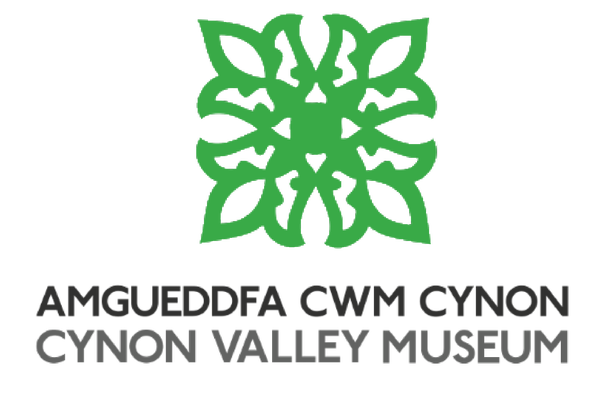
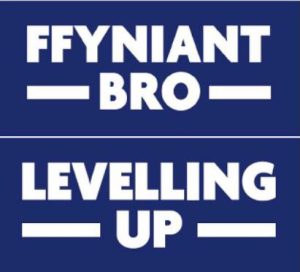


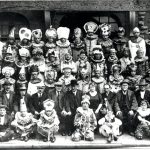
Rhian Have you acknowledged where you obtained this information? Alun
Although your blog makes it sound as though co-operation is a thing of the past, I can assure you it isn’t! Today there are many amazing co-ops in Wales, owned by local people, which give ownership and control to communities. 2021 marks the 250th anniversary of the birth of Robert Owen, father of the co-op movement, born in Newtown. I hope the museum will join in the celebrations!
I can still remember my mother’s Co-op number from the 50s and early 60s. I also remember having my hair permed in the salon in the Aberdare store at my grandmother’s insistence before I went to Uni and remember being highly embarrassed in Freshers’ Week to see that I was the only one with permed hair!
Hi there,
This was very interesting, I believe my great grandfather George Rowlands was a member of the A&DCS and was awarded a long service medallion in 1945 – would you know where I could find more information please.
Thank you